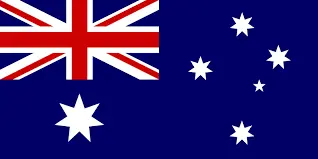
GDECE101 Early Childhood Care and Education Report Sample
Assignment Brief
Structure
Introduction
• Provide an overview of the aims and objectives of the report
• Introduce the assessment topic
-Briefly introduce the concepts of resilience,
-Briefly introduce the Western notion of social justice,
- Briefly introduce Aboriginal and Torres Strait Islander epistemologies.
• Explain its significance in the context of early childhood education.
Body Paragraph
• Building Resilience in Aboriginal and Torres Strait Islander Children
o Definition of Resilience
o Source of Resilience
o Western notion of social justice
o The Impacts on ECE contexts
2) Understanding Aboriginal and Torres Strait Islander Epistemologies
• Define -Aboriginal and Torres Strait Islander epistemologies and worldviews.
• Discuss the significance of these epistemologies in the context of early childhood education.
• Provide examples of how these epistemologies influence early childhood educational practices and outcomes.
3) Policy Developments in Early Childhood Education (ECE) Over the Past 20 Years:
• Review key policy developments and changes related to the inclusion of Aboriginal and Torres Strait Islander epistemologies in ECE over the past two decades.
• Analyze the effectiveness and impact of these policies on educational practices and outcomes for Indigenous children.
4) Recommendations for Further Developments:
• Based on a critical appraisal of current policies and practices, propose recommendations for further developments in policy and practice.
• Justify your recommendations with reference to relevant academic literature, government reports, and policy documents.
• Discuss how these recommendations align with the principles of social justice and support the resilience of Aboriginal and Torres Strait Islander children.
Conclusion
• Summarize the key findings of the report.
• Emphasize the importance of considering Aboriginal and Torres Strait Islander epistemologies in early childhood education for promoting resilience and social justice.
• Emphasize the significance of implementing the recommended changes for improving educational outcomes for Indigenous children.
Solution
Introduction
The purpose of this study is to find out the ways that Aboriginal and Torres Strait Islander children in early childhood education (ECE) can be more resilient. The capacity to adapt and succeed even though the challenges are there, which is otherwise called flexibility, is vital to calculating their typical and solid development. In addition, the report also compares the Western idea of social justice, which is equality and access to resources, with the Indigenous view. The Aboriginal and Torres Strait Islander theories that are rooted in cultural traditions and the holistic worldview are the key to the development of ECEs that are both inclusive and effective. The ECE know-how and the uptake of these concepts are the main things that would lead to the formation of a feeling of belonging and the improvement of the educational outcomes for Indigenous children which, in turn, is the base for their long-term resilience and success for university assignment help.
Main Body
1. Building Resilience in Aboriginal and Torres Strait Islander Children
1.1 Definition of Resilience
The aboriginal children are tough and they can still perform well even if they face challenges, and they can also maintain their mental health and development (Chamberlain et al., 2022). Therefore, the ability to face the hindrances, to adjust to the changes and to still strive for one's dreams and cultural values is what the essay is talking about. It is a mechanism that is continually changing and shaped by the individual, family, community, and cultural factors.
Figure 1.1: Building Resilience
(Source: Services, 2023)
1.2 Source of Resilience
The reasons that these children are so resilient are numerous and they come from their cultural identity, community support, and their land and traditions (Sakapaji et al., 2024). Family relationships, cultural norms, story-telling, and community meetings are the fundamental elements that make a person significant. The elders and the people who are in leadership positions are the teachers of the life and culture lessons and by the way, they are the ones who in the process build resilience. The education systems that are founded on the cultural teachings and the Native ways of knowing will not only contribute to this resilience but also make it even better.
1.3 Western Notion of Social Justice
The Western approach to social justice, which is about equality, rights and access to resources, should be changed in some way to help Aboriginal and Torres Strait Islander people (Duke et al., 2021). For these communities, social justice also includes the right to self-determination, the protection of cultural heritage, and to fix the old wrongs. Resiliency-building strategies should be thus revised to include these wider issues, to make sure that the interventions are culturally sensitive and community-driven.
1.4 The Impacts on ECE Contexts
The Early Childhood Education (ECE) settings are the ones that mostly play a role in the resilience development of Aboriginal and Torres Strait Islander children (Freeborn et al., 2023). The cultural curricula that illustrate the Indigenous heritage and languages give the people a positive feeling of identity and belonging. To educate the employees on the cultural awareness and anti-bias methods is a must. Besides, the establishment of such partnerships with the Indigenous communities results in the fact that the educational practices are still by the cultural values and expectations of these communities. Hence, this method not only makes children resilient but also provides a competitive and enriched learning environment for all the students. The policy and practice in ECE should be the product of cultural safety, respect for Indigenous knowledge, and collaboration with the Aboriginal and Torres Strait Islander communities to be effective.
Aboriginal children are resilient, able to perform well despite challenges and maintain their mental health and development. This resilience is shaped by individual, family, community, and cultural factors. The reasons for resilience include cultural identity, community support, and land and traditions. Family relationships, cultural norms, story-telling, and network conferences are important factors for building resilience. Elders and leaders in leadership positions educate life and subculture instructions, contributing to resilience.
The Western notion of social justice ought to be revised to consist of the right to self-willpower, protection of cultural heritage, and addressing old wrongs. Resiliency-building strategies have to be culturally sensitive and community-driven. Early Childhood Education (ECE) settings play a widespread role within the resilience improvement of Aboriginal and Torres Strait Islander youngsters. Cultural curricula that illustrate Indigenous heritage and languages provide a fantastic sense of identification and belonging. Employees have to be educated on cultural consciousness and anti-bias strategies. Establishing partnerships with Indigenous groups guarantees that educational practices align with their cultural values and expectancies.
In brief, resilience in Aboriginal and Torres Strait Islander youngsters is a end result of cultural protection, admire for Indigenous knowledge, and collaboration with these communities. By incorporating these elements into resilience-building strategies, educators can create a more inclusive and powerful mastering environment for those youngsters.2. Understanding Aboriginal and Torres Strait Islander Epistemologies
2. Understanding Aboriginal and Torres Strait Islander Epistemologies
2.1 Define Aboriginal and Torres Strait Islander epistemologies and worldviews
Aboriginal and Torres Strait Islander paradigms of knowledge that are the ways of knowing and comprehending the world that are based on their cultures and traditions are called the Indigenous paradigms of knowledge. These beliefs show the connection between humans, nature, and spirituality and their interdependence (Marques et al., 2021). The information is circulated by storytelling, painting, dancing, and community practices which symbolize a whole concept of life where everything is interrelated.
2.2 Discuss the significance of these epistemologies in the context of early childhood education
These epistemologies are the basis of the early childhood education system as they make the learning environment a place that is based on the respect and the value of Indigenous cultures. The cultural background of Aboriginal and Torres Strait Islander children is the way of life they have been brought up with. It is important to find and add these world views in ECE in order to create the cultural identity and self-esteem of these children (Locke, 2020). It also produces a comprehensive perspective for all students, which in turn leads to the respect of the diversity and the acceptance of people of all sorts.
2.3 Provide examples of how these epistemologies influence early childhood educational practices and outcomes
In early childhood education, the Indigenous epistemologies can be taught by the Elders through storytelling activities, the music and dance of the traditional culture and the use of the natural materials for the play and learning. To be specific, a curriculum that has Dreamtime stories makes the children understand the moral lessons and the cultural values. Teachers can create outdoor learning spaces that are representative of the role of nature in Indigenous cultures, hence the students will be inspired to be environmental stewards from a very young age (Turner & Wilks, 2022). These methods not only increase the level of involvement and the learning results of the Indigenous kids but also make the study for all the students more interesting and more aware that there are different cultures in the world.
Aboriginal and Torres Strait Islander epistemologies are worldviews based on their cultures and traditions, emphasizing the interconnectedness of humans, nature, and spirituality. These ideals are transmitted through storytelling, portray, dancing, and network practices, symbolizing a lifestyles-related idea. These epistemologies are essential in early early life training (ECE) as they create a getting to know surroundings that respects and values Indigenous cultures. By incorporating those worldviews, ECE can create cultural identification and shallowness for these children, selling range and acceptance.
Examples of how those epistemologies influence early childhood academic practices include coaching Indigenous epistemologies via storytelling activities, traditional music and dance, and natural materials. A curriculum with Dreamtime testimonies facilitates kids recognize moral lessons and cultural values, while outdoor studying areas represent the function of nature in Indigenous cultures. These techniques no longer only growth the involvement and mastering consequences of Indigenous youngsters but also make the take a look at of all college students extra thrilling and privy to different cultures in the global.
In brief, Aboriginal and Torres Strait Islander epistemologies play a big function in early youth schooling, fostering respect for variety and attractiveness of numerous views.3. Policy Developments in Early Childhood Education (ECE) Over the Past 20 Years
3. Policy Developments in Early Childhood Education (ECE) Over the Past 20 Years
3.1 Review key policy developments and changes related to the inclusion of Aboriginal and Torres Strait Islander epistemologies in ECE over the past two decades
Within the last two decades, there have been big policy developments that aimed to include Aboriginal and Torres Strait Islander knowledge-based approaches into ECE. The NQF and EYLF which were launched in 2012, and the acknowledgement of diversity as well as the incorporation of Indigenous cultures into curricula were the central points of these frameworks (Thevillagecreative, 2023). The National Aboriginal and Torres Strait Islander Education Strategy 2015 and the Closing the Gap are the policies that have been trying to deal with the educational differences by promoting culturally responsive education practices and by increasing the Indigenous representation in the educational content and the staff.
.png)
Figure 3.1: Early childhood education in their early years
(Source: Pc.Gov.Au, 2023)
3.2 Analyze the effectiveness and impact of these policies on educational practices and outcomes for Indigenous children
These policies have given the education field unique ideas that have, thus, led to the inclusion of Indigenous perspectives more in the teaching materials, the cultural competence training of the educators has been increased and the Indigenous communities have been more involved. The EYLF has put into focus the whole learning and hence, respect towards diversity was also given a boost which later led to the inclusion of the Indigenous knowledge systems in the daily learning activities (Townley et al., 2023). The evidence and studies prove that these projects have promoted the growth of the educational results and the health of Indigenous children by creating a feeling of identification and cultural pride. There are still challenges to the realization of these policies like the non-unification of the different regions and the demand for continuous assistance and resources to be carried out to the level of the target of these policies (Apostolopoulos et al., 2020). The continuous dedication and the changes that are going to be implemented are the main reasons to preserve and further improve the gains that have been made in ECE for Aboriginal and Torres Strait Islander children.
4. Recommendations for Further Developments
4.1 Based on a critical appraisal of current policies and practices, propose recommendations for further developments in policy and practice
To further develop policies and practices in ECE, it is crucial to
? the improvement of ongoing professional learning for teachers in the area of cultural competence and Indigenous pedagogies is the goal.
? community involvement will be boosted through the participation of the Indigenous elders and the families in the curriculum planning.
? the schools have to get the funds for the programs that support the inclusion of Aboriginal and Torres Strait Islander epistemologies and
? introduce the regular assessments that will be an instrument to guarantee the proper integration of these practices.
4.2 Justify the recommendations concerning relevant academic literature, government reports, and policy documents
The above-mentioned suggestions are based on the academic literature which emphasizes the importance of culturally responsive teaching to improve the educational performance of Indigenous children. The "Closing the Gap" report, a government document, is proof that the government is determined to close the educational gap (Australian Government, 2020). The EYLF and the NQF also support the teachers and the community to be the teachers and the community as the most effective way of putting the Indigenous perspectives into practice.
4.3 Discuss how these recommendations align with the principles of social justice and support the resilience of Aboriginal and Torres Strait Islander children
This particular set of proposals is consistent with the social justice requirements because it is based on the principles of equal treatment, the inclusion of minorities, and the recognition of cultural diversity. The policies' introduction gives the Aboriginal and Torres Strait Islander communities the means to protect their cultural heritage and the knowledge system, which on the one hand, eradicates the systemic barriers and on the other hand, creates a more inclusive educational environment (Rutherford et al., 2020).
Conclusion
The report in question emphasizes the significant contribution of Aboriginal and Torres Strait Islander cosmologies to resilience and social justice which are key elements in the education of young children. One of the main outcomes is that culturally responsive curricula, community engagement, and ongoing professional development for faculty are necessary to succeed. According to the independent experts, the three aspects are essential and, therefore, this result is proof of them The Indigenous knowledge systems should be given the top position because it eases the learning process of the Indigenous kids and also enables them to have continuous resiliency and happiness.
References
Apostolopoulos, N., Liargovas, P., Stavroyiannis, S., Makris, I., Apostolopoulos, S., Petropoulos, D., & Anastasopoulou, E. (2020). Sustaining rural areas, rural tourism enterprises and EU development policies: A multi-layer conceptualisation of the obstacles in Greece. Sustainability, 12(18), 7687. https://www.mdpi.com/2071-1050/12/18/7687
Australian Government. (2020). Closing the Gap. Closing the Gap. https://www.closingthegap.gov.au/
Chamberlain, C., Gray, P., Bennet, D., Elliott, A., Jackomos, M., Krakouer, J., ... & Langton, M. (2022). Supporting Aboriginal and Torres Strait Islander Families to Stay Together from the Start (SAFeST Start): Urgent call to action to address crisis in infant removals. Australian Journal of Social Issues, 57(2), 252-273. https://onlinelibrary.wiley.com/doi/pdf/10.1002/ajs4.200
Duke, D. L., Prictor, M., Ekinci, E., Hachem, M., & Burchill, L. J. (2021). Culturally Adaptive Governance—Building a new framework for equity in Aboriginal and Torres Strait Islander health research: Theoretical basis, ethics, attributes and evaluation. International Journal of Environmental Research and Public Health, 18(15), 7943. https://www.mdpi.com/1660-4601/18/15/7943
Freeborn, C., Mardhani-Bayne, A., & Soetaert, C. (2023). Quality and educator dispositions for indigenous families in the urban early learning and child care context: a scoping review. International Journal of Child Care and Education Policy, 17(1), 6. https://link.springer.com/article/10.1186/s40723-023-00108-5
Locke, M. L. (2020). Yanna jannawi–walk with me. centering indigenous ways of knowing in early education and care services (Doctoral dissertation, University of Technology Sydney (Australia)). https://search.proquest.com/openview/bdc31479c1d13cf7775daf3b46adb4a7/1?pq-origsite=gscholar&cbl=2026366&diss=y
Marques, B., Grabasch, G., & McIntosh, J. (2021). Fostering landscape identity through participatory design with indigenous cultures of Australia and Aotearoa/New Zealand. Space and culture, 24(1), 37-52. https://journals.sagepub.com/doi/full/10.1177/1206331218783939
Pc.Gov.Au. (2023, July 12). Children are engaged in high quality, culturally appropriate early childhood education in their early years. Closing the Gap Information Repository - Productivity Commission. https://www.pc.gov.au/closing-the-gap-data/annual-data-report/report/snapshot-socioeconomic/outcome-area3
Rutherford, K., Britton, A., McCalman, J., Adams, C., Wenitong, M., & Stewart, R. (2020). A STEP-UP resilience intervention for supporting indigenous students attending boarding schools: Its development and implementation. Australian and International Journal of Rural Education, 30(2), 44-66. https://search.informit.org/doi/pdf/10.3316/informit.303028030198559
Sakapaji, S. C., García Molinos, J., Parilova, V., Gavrilyeva, T., & Yakovleva, N. (2024). Navigating Legal and Regulatory Frameworks to Achieve the Resilience and Sustainability of Indigenous Socioecological Systems. Resources, 13(4), 56. https://www.mdpi.com/2079-9276/13/4/56
Services, W. (2023). Building Resilience. Wellness Services. https://www.boisestate.edu/wellness/resilience/
Thevillagecreative. (2023). The National Quality Framework. The Village Creative Education. https://www.thevillagecreative.com.au/the-national-quality-framework
Townley, C., Grace, R., Woodrow, C., Baker, E., Staples, K., Locke, M. L., & Kaplun, C. (2023). Educator perspectives on embedding Acknowledgement to Country practices in early learning centres in Australia. Australasian Journal of Early Childhood, 48(2), 86-98. https://journals.sagepub.com/doi/pdf/10.1177/18369391231173182
Turner, A., & Wilks, J. (2022). Whose voices? Whose knowledge? Children and young people’s learning about climate change through local spaces and indigenous knowledge systems. Children's geographies, 1-17. https://www.tandfonline.com/doi/abs/10.1080/14733285.2022.2139591




 81 Isla Avenue Glenroy, Mel, VIC, 3046 AU
81 Isla Avenue Glenroy, Mel, VIC, 3046 AU



